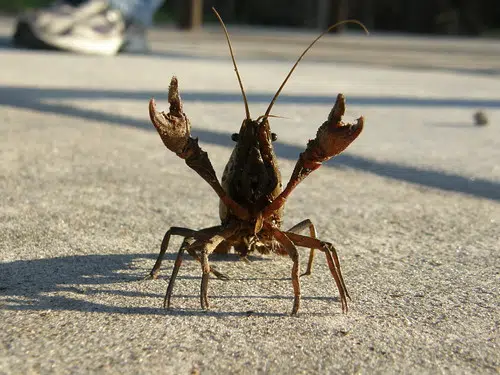While crawfish season begins in January, drought conditions could have an impact on the state’s $230 million dollar crawfish industry. LSU AgCenter Area Agent for crawfish production Todd Fontenot says producers are already flushing their fields to reduce cracking.
“Some producers are trying to add a little water to these fields to keep them moist to keep those burrows from possibly getting too dry or if they have forages planted for crawfish to provide moisture for them.”
The bulk of crawfish production in Evangeline, Allen, St. Landry, Calcasieu, Cameron, Jefferson Davis, and Acadia are rice-crawfish rotation ponds. In those fields, water is drained between early July and early August to facilitate rice harvest. Fontenot says producers have to make sure rice grows because it’s a food source for crawfish in the winter.
“These fields had rice production or had rice growing on them throughout this spring and summer and were recently harvested. So, those ponds will be re-flooded or water will be added to them.”
Fontenot says the lack of rain increases salt levels in water sources. He points out that flushing introduces a salinity problem for crawfish producers.
“Without rain, those salt contents will continue rising and there are possibilities that some producers may not be able to flood their ponds if the salinity levels remain high in their irrigation water.”
Nearly 300 thousand acres are dedicated to crawfish farming in Louisiana.






Comments